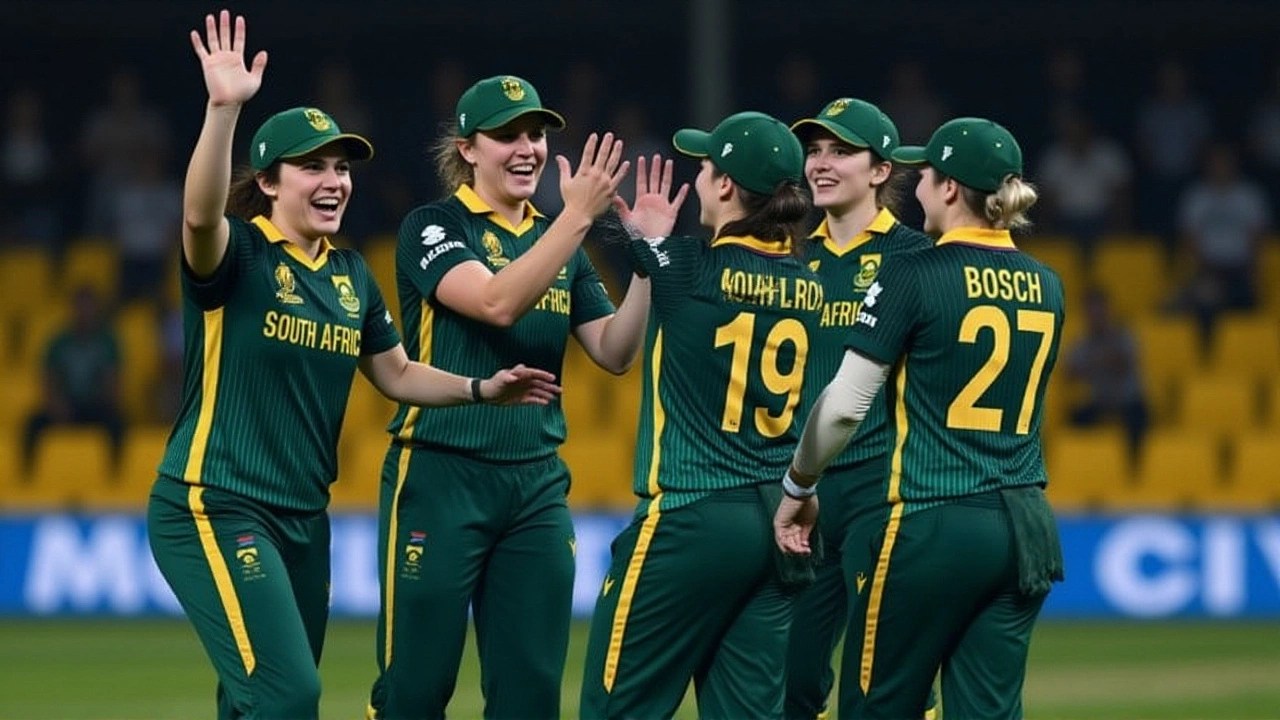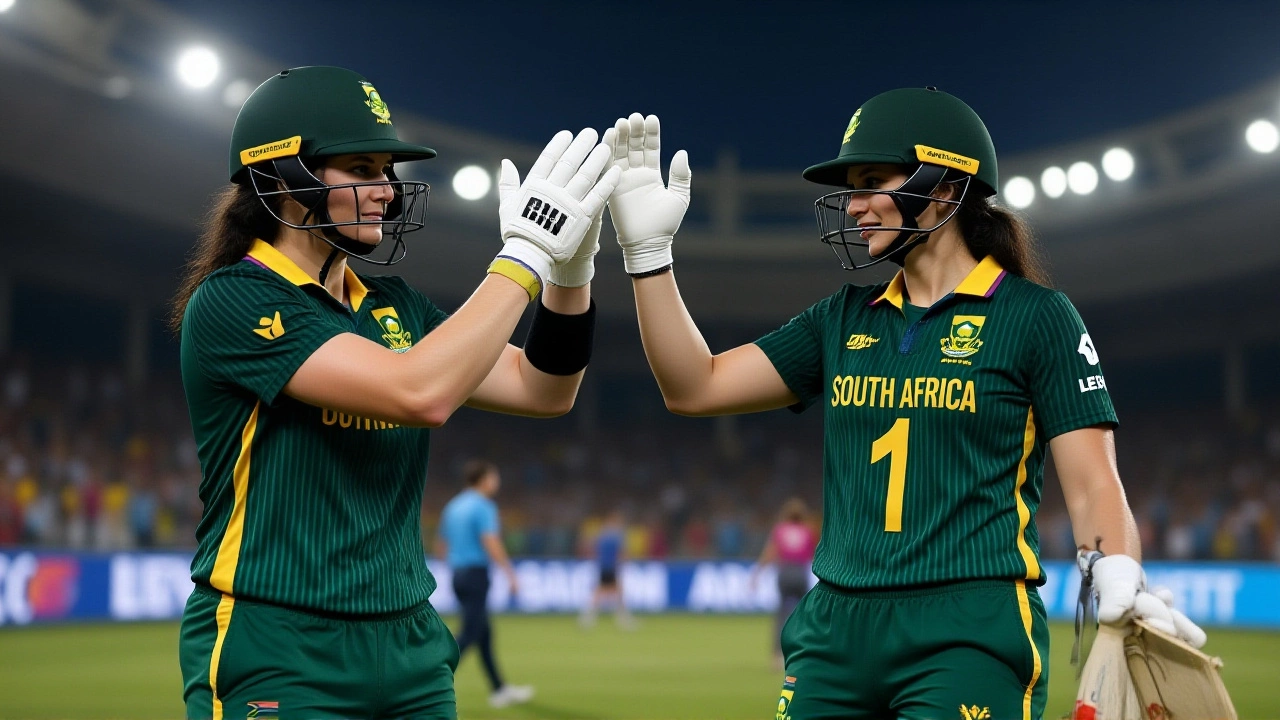On a crisp October evening in Guwahati, South Africa Women didn’t just win a cricket match—they rewrote history. Their 125-run demolition of England Women in the ICC Women's Cricket World Cup 2025 semi-final on Wednesday, October 29, 2025, at the Barsapara Cricket Stadium wasn’t just a victory. It was the moment a team that had spent nearly three decades as the tournament’s perennial underachievers finally broke through. Captain Laura Wolvaardt didn’t just lead her side—she carried them on her back with a masterclass 169 off 143 balls, the defining innings of her career and the most explosive knock in South African Women’s World Cup history.
A Century That Changed Everything
Wolvaardt’s 169 wasn’t just about runs. It was about timing, temperament, and sheer will. She came in after the powerplay ended at 58 without loss and faced the pressure of a team that had never made a final. The crowd, a mix of local Indian fans and a growing contingent of South African supporters, fell silent as she reached her 50 off 52 balls. Then, she accelerated. Twenty fours. Four sixes. A strike rate of 118.18. She didn’t just score runs—she dismantled England’s bowling attack piece by piece. Sophie Ecclestone, England’s premier spinner, took 4 wickets but conceded 47 runs. Lauren Bell, usually so reliable, was carved for boundaries. Even Nat Sciver-Brunt, England’s all-rounder and former captain, couldn’t contain the surge."Feels a bit unreal," Wolvaardt said post-match, her voice thick with emotion. "This is the sort of thing you dream of when you are a kid. Scoring a hundred in the World Cup and the fact that it came in the semifinal makes it even more special." And when asked to rate the knock? "Probably has to be at the top." No hesitation. No modesty. Just truth.
The Supporting Cast That Held It Together
Wolvaardt didn’t do it alone. Tazmin Brits anchored the middle with a composed 45. Marizanne Kapp, the veteran all-rounder, launched a blistering 42 off 33 balls—four fours and a six that sent the stands into a frenzy. Then came Chloe Tryon, the finisher. With the score at 286/6 in the 47th over, she smashed 33 not out off just 26 balls, including a six over midwicket that landed on the roof of the stadium. Nadine de Klerk, promoted to finish, cleared the ropes twice in her 11 not out off six balls. The final over, bowled by Charlie Dean, went for 19. England’s bowlers looked drained. Their fielding, usually sharp, was sloppy. And the scoreboard? 319/7. A total that, on paper, looked insurmountable.England’s Collapse: A Champion’s Fall
England, the defending champions from 2022, entered this match as favorites. They’d won their group with ease. Their batting depth was praised. Their spin duo—Ecclestone and Sciver-Brunt—were considered match-winners. But the pressure of the semi-final, the weight of expectation, and the sheer force of South Africa’s innings broke them. They never recovered after losing their openers early. Alice Capsey, their rising star, was caught behind off Wolvaardt’s bowling. Tammy Beaumont fell to Kapp. By the 30th over, they were 98/5. The chase was never alive. The required run rate climbed past 8.5. The crowd, once cheering for England, now roared for South Africa. When the final wicket fell—Annerie Dercksen caught at deep midwicket—there was no celebration from England. Just silence. And then, the realization: their title defense was over.A Historic First: The Proteas Break Through
Since their debut in 1997, South Africa Women had reached the semi-finals twice—2017 and 2022. Each time, they’d fallen short. Each time, the narrative was the same: "They’re talented, but they lack the final-day nerve." This time, the nerve was there. And it was forged in the pressure of a World Cup semi-final. The International Cricket Council, headquartered in Dubai, now has a new finalist—one that’s never been here before. The Proteas didn’t just qualify. They announced themselves."We’ve been waiting 28 years," said coach Hilton Moreeng after the match. "We’ve had great players. We’ve had close calls. But tonight? Tonight, we showed the world what we’re made of. This isn’t luck. This is legacy."

What’s Next? The Final in Navi Mumbai
The final, set for Sunday, November 2, 2025, at the Navi Mumbai Cricket Stadium, will pit South Africa against the winner of Thursday’s clash between India Women and Australia Women. Australia, the most successful team in Women’s World Cup history, are the favorites. But South Africa aren’t just here to make up the numbers anymore. They’ve proven they can outplay the best. And with Wolvaardt in this kind of form, anything’s possible.Why This Matters
This isn’t just about one team making a final. It’s about the evolution of women’s cricket. South Africa’s rise mirrors the global growth of the game. Their players are now professional, well-supported, and mentally resilient. They’ve moved beyond the "underdog" label. This win sends a message: no team is too small, too new, or too overlooked to win the biggest prize. And for young girls watching in Cape Town, Johannesburg, or Durban? They now have a team to believe in—one that didn’t just dream of a final… they walked into one.Frequently Asked Questions
How did Laura Wolvaardt’s 169 compare to other World Cup performances?
Wolvaardt’s 169 is the highest individual score by a South African woman in a World Cup match, surpassing her own previous best of 142 against Pakistan in 2022. It’s also the second-highest score in this tournament’s history, behind only Beth Mooney’s 172 in 2022. More importantly, it’s the first century by a South African in a World Cup semi-final—any gender—and the highest by any captain in a Women’s World Cup semi-final since Charlotte Edwards’ 114 in 2009.
Why has South Africa never reached a final before despite having strong players?
Historically, South Africa struggled with consistency under pressure. Their batting collapsed in knockout games, and their spin attack lacked depth. In 2017, they lost to England by 3 wickets despite posting 270. In 2022, they were bowled out for 148 against Australia. This time, the middle order held firm, the finishers delivered, and the fielding improved. The team’s mental conditioning, led by sports psychologist Dr. Nomsa Nkosi, has been a game-changer.
Who were the key bowlers for South Africa in the match?
South Africa’s bowling didn’t need to be dominant—their total was too high. But Marizanne Kapp took 2 for 32 in 9 overs, including the crucial wickets of Tammy Beaumont and Nat Sciver-Brunt. Sune Luus, the veteran left-arm spinner, finished with 1 for 27 in 10 overs, maintaining tight lines. Chloe Tryon also chipped in with 1 for 23 in 6 overs, breaking a dangerous 52-run partnership between Ecclestone and Bell.
What impact does this have on women’s cricket in South Africa?
This win is expected to trigger a funding surge from Cricket South Africa. The government has already signaled it may increase investment in grassroots programs. Ticket sales for domestic Women’s Premier League matches have jumped 300% since the semi-final. And for the first time, South African girls are being scouted by overseas T20 leagues—not just as fillers, but as potential stars. Wolvaardt’s performance may be the catalyst for a new generation.
How does this result affect the final against Australia or India?
If Australia wins, they’ll be heavy favorites—they’ve won six of the last seven finals. But South Africa’s aggressive batting, especially in the death overs, could trouble Australia’s aging bowling unit. If India wins, the final becomes a massive home advantage story. India’s spinners might exploit the Navi Mumbai pitch better than Australia’s pace-heavy attack. Either way, South Africa enters as the most dangerous underdog in decades.
What’s the significance of the Barsapara Stadium hosting this match?
Barsapara, located in Assam, is one of India’s newer international venues and had never hosted a Women’s World Cup match before 2025. Its high altitude and short boundaries made it a batsman’s paradise—South Africa’s 319 was the highest total ever recorded here. The crowd of over 28,000, mostly local fans, created an electric atmosphere. The ICC’s decision to use this venue signaled a commitment to expanding the women’s game beyond traditional cricket hubs like Mumbai and Delhi.

